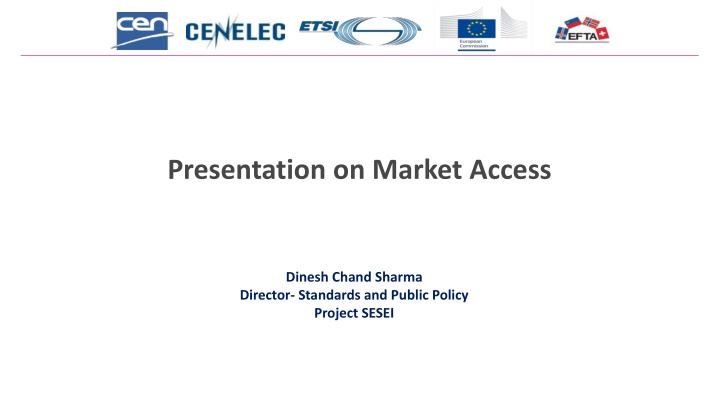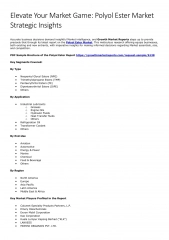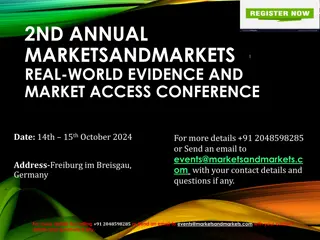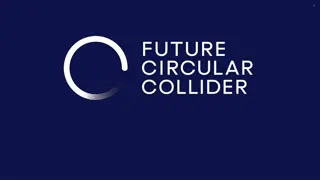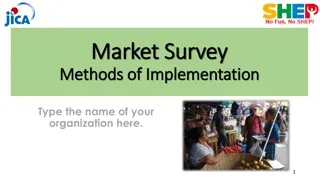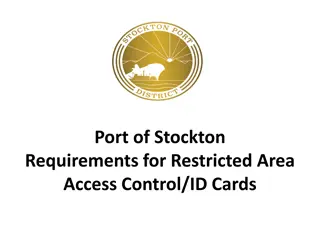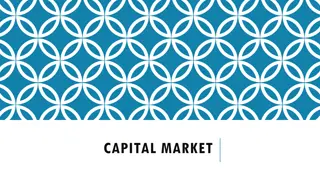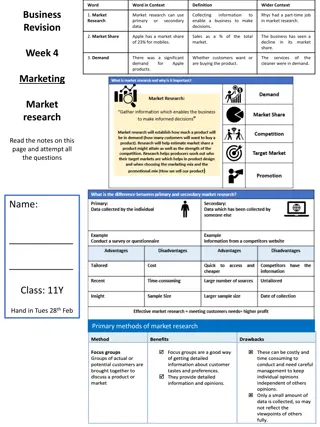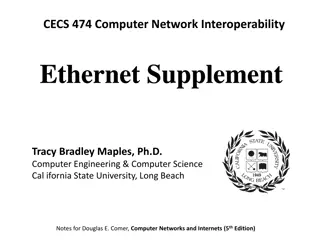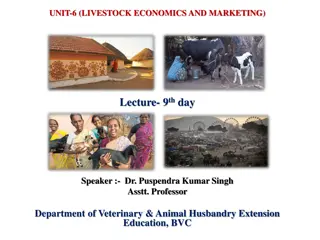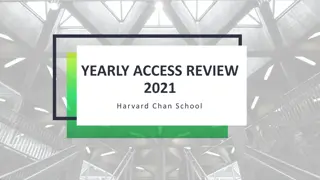Presentation on Market Access
In this presentation, explore the concept of market access in international trade, focusing on the World Trade Organization (WTO) and key schemes like BIS and TEC. Learn about tariff and non-tariff measures, trade liberalization, and the importance of market access for goods and services. Discover how WTO facilitates trade, resolves disputes, and supports economic development worldwide.
Download Presentation

Please find below an Image/Link to download the presentation.
The content on the website is provided AS IS for your information and personal use only. It may not be sold, licensed, or shared on other websites without obtaining consent from the author.If you encounter any issues during the download, it is possible that the publisher has removed the file from their server.
You are allowed to download the files provided on this website for personal or commercial use, subject to the condition that they are used lawfully. All files are the property of their respective owners.
The content on the website is provided AS IS for your information and personal use only. It may not be sold, licensed, or shared on other websites without obtaining consent from the author.
E N D
Presentation Transcript
Presentation on Market Access Dinesh Chand Sharma Director- Standards and Public Policy Project SESEI
Contents Definition World Trade Organization (WTO) Product Certification Scheme of Bureau of Indian Standards (BIS) Scheme - I (ISI Mark Scheme) Scheme II (Registration Scheme) Telecom Engineering Centre (TEC) Mandatory Testing and Certification of Telecom Equipment (MTCTE) Public procurement (Preference to Make in India) order 2017 of Government of India Market Access Slide 2
Definition Market access: the ability of a company/country to sell their goods/services across borders and enter a foreign market. According to WTO market access for goods in the WTO means the conditions, tariff and non- tariff measures, agreed by members for the entry of specific goods into their markets. Market access Vs Free Trade: Market Access Free Trade Market Access refers to the circulation of goods and services across borders with some barriers such as import duties or tariffs etc. Free trade implies a perfect state in which goods and services can circulated across borders without such barriers. Market Access Slide 3
World Trade Organization (WTO) WTO, a 164-member international organization, is successor to the General Agreement on Tariffs and Trade (GATT). Key Objectives: to set and enforce rules for international trade, to provide a forum for negotiating and monitoring further trade liberalization to resolve trade disputes to increase the transparency of decision-making processes to cooperate with other major international economic institutions involved in global economic management, and to help developing countries benefit fully from the global trading system. WTO is a rule-based, member-driven organization. All decisions are made by the members governments, and the rules are the outcome of negotiations among members. WTO deals with agriculture, textiles and clothing, banking, telecommunications, government purchases, industrial standards and product safety, food sanitation regulations, intellectual property and much more. Market Access Slide 4
World Trade Organization (WTO) Market access for goods: Conditions, tariff and non-tariff measures, agreed by members for the entry of specific goods into their markets Tariff commitments for goods are set out in each member's schedules of concessions on goods. > Current situation of Schedules of WTO Members is available here Market access for services: Involves reducing government policy interventions Integrated Trade Intelligence Portal (I-TIP): Provides a single entry point for information compiled by WTO on trade policy measures (over 25,000 measures) Trade in goods Trade in services I-TIP Goods provides comprehensive information on NTMs applied by WTO members in merchandise trade. It includes members' notifications of NTMs, such as technical barriers to trade, sanitary and phytosanitary measures, and anti-dumping and countervailing measures, as well as information on specific trade concerns raised at WTO committee meetings. > Go to I-TIP Goods a joint initiative of WTO and the World Bank consists of information on members' commitments under the WTO's General Agreement on Trade in Services (GATS), services commitments in regional trade agreements, applied measures, and services statistics. > Go to I-TIP Services Market Access Slide 5
World Trade Organization (WTO) Technical Barriers to Trade (TBT) Agreement to ensure that regulations, standards, testing and certification procedures don t create unnecessary obstacles to trade while recognizing countries rights to adopt the standards they consider appropriate. sets out a code of good practice for both the governments and non-governmental of industry bodies to prepare, adopt and apply voluntary standards. Over 200 standards-setting bodies apply the code. all WTO member governments are required to establish national enquire points under TBT agreement to answer all reasonable inquires from other members and interested parties concerning standards, technical regulations and conformity assessment procedures. India has been a WTO member since 1 January 1995 India has issued over 150 TBT notifications (including revised notifications). For complete list please click available here Ministry of Commerce, nodal ministry for WTO matters, has designated Bureau of Indian Standards (BIS) and Telecom Engineering Centre (TEC) as the WTO TBT Enquiry Point. I. BIS For all queries except those related tothe Telecom Sector, and II. TEC for all queries related to the Telecom Sector Market Access Slide 6
PRODUCT CERTIFICATION SCHEME OF BUREAU OF INDIAN STANDARDS (BIS) Scheme - I (ISI Mark Scheme) Scheme II (Registration Scheme)
Scheme - I (ISI Mark Scheme) ISI mark is a standards-compliance mark for industrial products in India since 1955 which certifies that a product conforms to an Indian standard (IS) developed by BIS. So far, BIS has identified over 200 products under ISI Mark Scheme which require mandatory certification. Product category Sub Category Product category Sub Category Cement Different kind of Portland cement, sulphated cement Steel Products Steel Wires, steel bars, Steel tubes, Steel Ply, Structural steel RCCBs, RCVOs, Lamps, Iron, Water heaters, Electric Stoves, Room Heaters, Switches, Cables, Batteries, Household Electrical goods Out door type Oil immersed Distribution Transformers upto and including 2500 kVA Electrical Transformers Baby formula, Processed cereal based foods, different kinds of milk powder, Various kinds of condensed milk, Packaged Natural Mineral Water, Infant milk substitutes, Milk-cereal based weaning foods, Hexane, Food grade, Plastic Feeding Bottles, Glass Feeding Bottles. Electrical Motors Energy Efficient Induction Motors-Three Phase Squirrel Cage Food & Related Products A.C. motor capacitors, Power Capacitors of Self-healing Type, Shunt Power Capacitors of the Non-Self-Healing Type Capacitors Oil Pressure Stoves Oil pressure stove, offset burner type, Multi-burner oil pressure stoves Tubes for pneumatic tyres, Pneumatic tyres for 2W, 3W, passenger car vehicles, commercial vehicles Caustic Soda, Boric Acid ,Poly Aluminium Chloride, Acetic Acid, Aniline, Methanol, Automobile Accessories Chemicals & Fertilizers Cylinder, Valves and Regulation LPG Cylinders, Valves, Regulators Hand-held Blender, Domestic Electric Food Mixer (Liquidizers and Grinders) and Centrifugal Juicer Kitchen Appliances Medical Equipment Clinical thermometers , Diagnostic Medical X-Ray Equipment Toys Safety of Toys . Market Access Slide 8
Scheme - I (ISI Mark Scheme) Ministry of Chemicals and Fertilisers has made BIS standards as mandatory for around 20 chemical products. S. No. Goods or article Sod Tripolyphosphat e Sod For Sulphoxylate Indian Standard S. No. Goods or article Indian Standard IS 538: 2000 (Reaffirmed 2015): Phenol (Carbolic Acid- Specification) IS 6100: 1984 (reaffirmed 2015): Specification for sodium Tripolyphosphate, Anhydrous, Technical 10 Phenol 1 IS 4505:2015: Sodium Formaldehyde Sulphoxylate- Specification IS 297: 2001 (Reaffirmed 2017): Sodium Sulphide, Technical Specification 2 11 Sod Sulphide IS 3205: 1984 (Reaffirmed 2015): Specification for Precipitated Carbonates, Technical 12 Morpholine IS 12084: 2018: Morpholine Specification Barrium Carbonate 13 Beta Picoline IS 16112: 2013: Beta Picoline- Specification 3 IS 12928: 1990 (Reaffirmed 2017) Precipitated Barium Carbonate for Ceramic and glass industry- specification 14 Gama Picoline Gamma Picoline- Specification 15 Pyridine IS 5058: 2018: Pyridine- Specification Hydrogen Peroxide Phos Oxychloride Phos Pentachloride IS 2080: 1980 (Reaffirmed 2016): Specification for Stabilized Hydrogen Peroxide IS 11657: 1986 (Reaffirmed 2015): Specification for Phosphorous Oxychloride, Technical IS 11744: 1986 (Reaffirmed 2015): Specification for Phosphorous Pentacholride, Technical 4 Poly Aluminium Chloride 16 IS 15573: 2018: Specification for Poly Aluminium Chloride 5 17 Acetic Acid IS 695: 1986: Specification for Acetic Acid 6 18 Methanol IS 517: 1986 Specification for Methanol (Methyl Alcohol) IS 4581: 1978 (Reaffirmed 2015): Specification for Phosphorous Trichloride, Pure and Analytical Reagent 7 Phos Trichloride Caustic Soda 8 Acetone IS 170: 2004 (Reaffirmed 2015) Acetone- Specification 19 IS 252 : 2013: Caustic Soda - Specification Pot Carb Anhydrous IS 7129: 1992 (Reaffirmed 2015) Potassium Carbonate, Anhydrous-Specification 9 20 Aniline lS 2833: 1973 Specification for Aniline Technical Ministry is also finalizing plans to increase the number of chemicals and petrochemicals to be covered by mandatory certification. Market Access Slide 9
Scheme II (Compulsory Registration Scheme) BIS and MEITY introduced CRS/CRO in 2012 Under this scheme it is mandatory for manufacturers to get their products registered before launching them in market. As of April 2020, 61 electronic products are covered under CRS MEITY notified "Electronics and Information Technology Goods (Requirement for Compulsory Registration) Order, 2012" in 2012 for 15 categories of electronics items. Another 15 product categories, 13 product categories, 12 electronic products were added by MEITY in 2014, 2017 & 2020 respectively. Ministry of New and Renewal Energy (MNRE) has also notified Solar Photovoltaics, Systems, Devices and Components Goods (Requirements for Compulsory Registration) Order, 2017 for 6 products through notification dated 05 September 2017. BIS is operating CRS as per the provision of Scheme - II of the BIS (Conformity Assessment) Regulations, 2018 Overseas Manufacturers must have a local representative in India to represent the manufacturer locally and will be responsible for placing the product in the market To make this program robust, Market Surveillance has been designed to ensure compliance For more information please click here>> For the list of BIS approved labs, please click here>> Market Access Slide 10
TELECOM ENGINEERING CENTRE (TEC) Mandatory Testing and Certification of Telecom Equipment (MTCTE)
Mandatory Testing and Certification of Telecom Equipment (MTCTE) Department of Telecommunications (DoT) vide Gazette Notification No. G.S.R. 1131(E) dated 5th September, 2017 has amended the Indian Telegraph Rules, 1951 (Amendment 2017) to introduce MTCTE TEC is implementing MTCTE and has specified Essential Requirements (ERs) for various telecom equipment, which would need to be met before TEC grants the certification. ERs for Telecom Products (including 2-Wire Telephone Equipment, G3 FAX Machine, Modem, Cordless Telephone, PABX, ISDN CPE) covered under Phase-I Roll Out Other Finalized ERs (Transmission Terminal Equipment, PON Family of Broadband Equipment, Feedback Devices, Router, PTP GM Equipment, IP Security Equipment, Conferencing Equipment) ERs (under finalisation) for remaining Identified Telecom Products (including Base Station for cellular network, DSL, Iot Gateway, Tracking Device, Smart Electrical Meter, Smart Security Camera, Smart Watch, End point Device, LAN Switch, Eqpt Operating in 2.4GHz and 5 GHz band, MRTS Eqpt, PTP PMP Microwave, CCN (Compact Cellular Network), Mobile User Equipment, MGW (Media Gateway), SGW (Signalling Gateway), SBC (Session Border Controller), SSW (Soft Switch), ISDN, Satellite Communication Eqpt, VHF UHF Radio System Eqpt, IP Terminal, Repeaters for Cellular Network, Media Converter, HF Radios Annexure to ERs Equipment needs to be tested only in TEC designated CAB, or recognized CAB of MRA partner country. based upon their test reports, certificate shall be issued by TEC. Surveillance of products under MTCTE is carried out by Licensed Service Area (LSA) field units of DoT. Market Access Slide 12
PUBLIC PROCUREMENT (PREFERENCE TO MAKE IN INDIA) ORDER 2017 OF GOVERNMENT OF INDIA
Public procurement (Preference to Make in India) order 2017 (PPP MII Order 2017) of Government of India To encourage Make in India and to promote manufacturing and production of goods, services and works in India with a view to enhancing income and employment, Government issued PPP MII Order 2017 vide DIPP Order No.P- 45021/2/2017-B.E.-II dated 15.06.2017 and subsequent revision vide Order No. 45021/2/2017-PP(BE-II) dated 28.05.2018 and order No. 45021/2/2017-PP(BE-II) dated 29.05.2019 respectively. This Order is issued pursuant to Rule 153 (iii) of the General Financial Rules 2017 Salient features: The Order is applicable for procurement by Ministry/ Department/ attached/ subordinate office of, or autonomous body controlled by, the Government of India and includes Government companies as defined in the Companies Act. Items, in respect of which the Nodal Ministry has communicated that there is sufficient local capacity and local competition, only local suppliers shall be eligible to bid irrespective to purchase value. Margin of purchase preference shall be 20% Ministries/Departments notified their own purchase preference policy after 1stJanuary 2015 with approval of he cabinet Nodal Ministries/Departments: Deptt. of Industrial Policy & Promotion Ministry of Electronics & IT Department of Telecommunications Ministry of Power Ministry of New and Renewable Energy Department of Heavy Industries Ministry of Textiles Ministry of Civil Aviation Ministry of Steel Ministry of Housing & Urban Affairs Department of Pharmaceuticals Ministry of Petroleum and Natural Gas Department of Chemicals & Petrochemicals Ministry of Shipping Ministry of Railways Department of Defence, Ministry of Defence Department of Defence Production Ministry of Mines Department of Fertilizers Market Access Slide 14
Public procurement (Preference to Make in India) order 2017 (PPP MII Order 2017) of Government of India MEITY: Nodal Ministry for implementation of the Electronic Products Notifications issued in furtherance of PPO 2017. Notified products including Desktop PCs, Laptop PCs, Tablet PCs, Dot Matrix Printers, Contact Smart Cards and Contactless Smart Cards, LED Products, Biometric Access Control/Authentication Devices, Biometric Finger Print Sensors, Biometric Iris Sensors and Servers, Cellular Mobile Phones (vide Notification No. 33(1)/2017-IPHW dated 14.09.2017 and Notification No. 33(5)/2017-IPHW dated 01.08.2018) DoT: nodal department for implementing the provisions related to procurement of goods, services or works related to the telecommunication sector. Identified 36 telecom products, services and works including Wireless/Wireline PABXs/ IP PBX & /Media Gateways, Set-Top Boxes, Optical Fiber Cable, Telecom Power System (Including Solar Power), SDN Software Controllers, NVF and CNF software, Telecom Cloud infrastructure, Telecom Data centers, M2M/IOT Subsystems, Telecom Services/Works etc. ( Download notification) Issued an Office Memorandum (OM) dated 19-02-2020 in which telecom items have been identified for action under clause 10 (d) of PPP MII order 2017 (download OM) MNRE: Nodal ministry for implementation of the Non-conventional energy Products Notifications issued in furtherance of PPO 2017 Products produced for Small Hydro Power projects, Wind Power projects, Off Grid/Decentralized Solar Power Projects, Grid Connected Solar Power Projects, Biomass gasifier projects, Biomass Cogeneration projects, Municipal Solid Waste Management Projects, Waste to Energy (biogas/bio-CNG) projects. List of products is available here MoP: Nodal Ministry for implementation of the Power (Generation, Transmission & Distribution) Products notifications issued in furtherance of PPO 2017. MoP has issued: PPP MII order with revised requirements for locally made components in electrical equipment used in power distribution centre List of products associated with the Transmission sector Order for the implementation of public procurement in Hydro Power Sector and Thermal Power Sector Market Access Slide 15
Dinesh Chand Sharma (Seconded European Standardization Expert in India) Director Standardization & Public Policy SESEI C/O EBTC, DLTA Complex, Gate No 3, 1st Floor, 1, Africa Avenue, New Delhi 110029 Mobile: +91 9810079461, Tel: +91 11 3352 1525, dinesh.chand.sharma@sesei.eu www.sesei.eu www.sesei.in Market Access Slide 16
